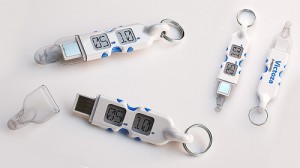American Diabetes Association Diet Plan
Practical Food Guidelines for Diabetes
Post updated: 8th April 2023
Dietary advice for people living with diabetes is gradually changing as a result of modern scientific research. After several years of favoring low-fat, high-carbohydrate diets, a study posted at the ADA (American Diabetes Association) Scientific Sessions reports that there are other diet options that give better cardiovascular disease (CVD) and diabetes outcomes than the standard diet formerly recommended by the ADA.
Some of the practical eating patterns discussed include:
DASH Diet
The DASH (Dietary Approach to Stop Hypertension) diet was shown to reduce the risk of diabetes, lower blood pressure, and it helps people lose weight. One of the main advantages of the DASH diet is that it is practical and easy to follow.
A report shared in Diet Spectrum by Registered Dietitian and Certified Diabetes Educator Amy Campbell notes that besides being practical, the DASH eating pattern does not require any special supplements and foods, and it can also be followed by patients’ entire families.
Scientific studies have proven that the DASH diet helps reduce blood pressure more than traditional American diets. This diet is specifically designed to be low in total fat, cholesterol, and saturated fat, and rich in calcium, magnesium, and potassium as well as fiber and protein.
A study published in the journal Diabetes Care shows that the DASH diet is highly effective in improving insulin sensitivity suggesting that this dietary plan can also help improve blood sugar control.
The DASH approach includes plenty of
- vegetables,
- whole grains, and fruits;
- low-fat or fat-free milk and dairy products,
- fish,
- poultry,
- lean meat,
- and nuts.
Low Carb Diet
VLCDs (very-low-carb-diets) were found to reduce A1C (a blood test that measures average blood glucose over the previous 3 months), lower serum fat (triglycerides), give higher levels of HDL (high-density lipoprotein, or “good cholesterol”), and reduced weight and blood pressure. A very low-carb diet is strict as it allows daily consumption of 20 to 50 grams only.
LCDs (low-carb diets) which prescribe a daily intake of 20 to 40% of calories from carbohydrates, also show several benefits compared to the typical American diet (which generally includes about 45% carbs) or the previously recommended ADA diet (generally about 50% carbohydrates). Like the DASH diet, low carbs diets recommend vegetables, particularly non-starchy veggies such as cabbage, cucumber, cauliflower, cooked greens, salad greens, and broccoli.
Both dietary approaches approve a wide range of plant fats, including oils, nuts, avocados, and nut butter. However, unlike DASH, low-carb diets favor meats and animal fats. Both diets also approve protein usually in the form of fish, poultry, and lean meat, but disagree on cheese, eggs, and fattier meats.
Some low-carb diet plans include a wide range of vegetables and fruits such as berries. However, all avoid sugary and starchy foods such as potatoes, sweets, bread, rice, and pasta.
When you buy through links on our website, we may earn a small commission at no cost to you. Thanks for your support 🙂
Will a low-carb diet actually lower blood sugar?
Carbohydrates have been blamed for a wide range of issues including stomach aches, weight gain, and feeling draggy and tired. As a result, there are numerous websites and books dedicated to reducing carbs and making it easier to get started.

Although more and more studies are coming out of the never-ending low-carb debate, misconceptions about these plans are still abounding. Let’s explore some of the low-carbohydrate claims and whether the claims are falsehoods or facts
For instance, some people think that all carb foods are bad, which is a dangerous and misinformed assumption. Moreover, falling into the bad/good food mentality makes it hard to adopt a healthy diet. It’s essential to understand that all foods have their advantages and disadvantages.
For instance, some carb foods such as cake, candy, and soda, are not so healthy. However, other carb foods such as black beans, raspberries, sweet potatoes, and quinoa are highly nutritious. Refined carbs are the types of carbohydrates to limit, while unrefined carbs such as whole grains, fruit, legumes, and vegetables are good alternatives.
Vegan or Vegetarian Diets for Diabetics
Numerous studies have shown that diets that aim at eliminating or reducing animal products help lower LDL cholesterol and A1C, reduce the risk of diabetes, and promote weight loss. A vegetarian diet does not contain meat; vegan means eliminating all animal products from your diet such as lard and dairy. The American Diabetes Association has added these dietary options to its list of recommended practical diabetes diet plans.
Can the Mediterranean Diet Plan help with Diabetes?
The Mediterranean diet plan is one of the high-ranking diet plans for managing heart disease and diabetes as well. Just like the DASH diet plan, the Mediterranean diet is rich in fruits, fish, vegetables, grains, nuts, beans, and olive oil.
The diet also encourages a small amount of red wine. The Mediterranean eating pattern lowers triglyceride and AIC levels and reduces the risk of cardiovascular disease and diabetes.
The foods you eat on the Mediterranean diet can vary depending on your preference and the region you live in. Some of the key foods that you can incorporate in the Mediterranean diet include:
- Fruits: Figs, dates, bananas, pears, oranges, grapes, berries, and dates.
- Vegetables: Peppers, broccoli, spinach, eggplant, tomatoes, kale, and asparagus.
- Whole grains: Whole wheat, corn, brown rice, oats, barley, and spelt.
- Dairy: Cheese and yogurt.
- Eggs: Quail, duck, and chicken eggs.
- Poultry: Duck, chicken, and turkey
- Fish: Crab, mackerel, trout, oysters, sardines, salmon, and shrimp
- Nuts and seeds: Walnuts, sunflower seeds, sesame, pistachios, and almonds
- Legumes: Peas, Beans, peanuts, lentils, and chickpeas.
- Fats: Avocado oil, grape seed oil, avocado, olive oil, and olives.
Sweets and red meats are limited and beverages include a glass of red wine and water each day.
All diabetes patients can benefit from MNT (Medical Nutrition Therapy), meeting with dietitians to create practical meal plans. In most cases, improvements in A1C levels with Medical Nutritional Therapy are similar to or greater than what can be achieved with medication.
When choosing food to consume, this diet plan gives you a solid guideline that you can incorporate quite easily into your lifestyle.


 However, a diabetic’s glucose level will always rise right after eating. A child with diabetes may have a blood glucose level of up to 10 mmol/L. Those who have type two diabetes may have a glucose level ranging from 4 to 9 mmol/L while those with type one diabetes should never have a blood glucose level of over 8.5 mmol/L.
However, a diabetic’s glucose level will always rise right after eating. A child with diabetes may have a blood glucose level of up to 10 mmol/L. Those who have type two diabetes may have a glucose level ranging from 4 to 9 mmol/L while those with type one diabetes should never have a blood glucose level of over 8.5 mmol/L.



